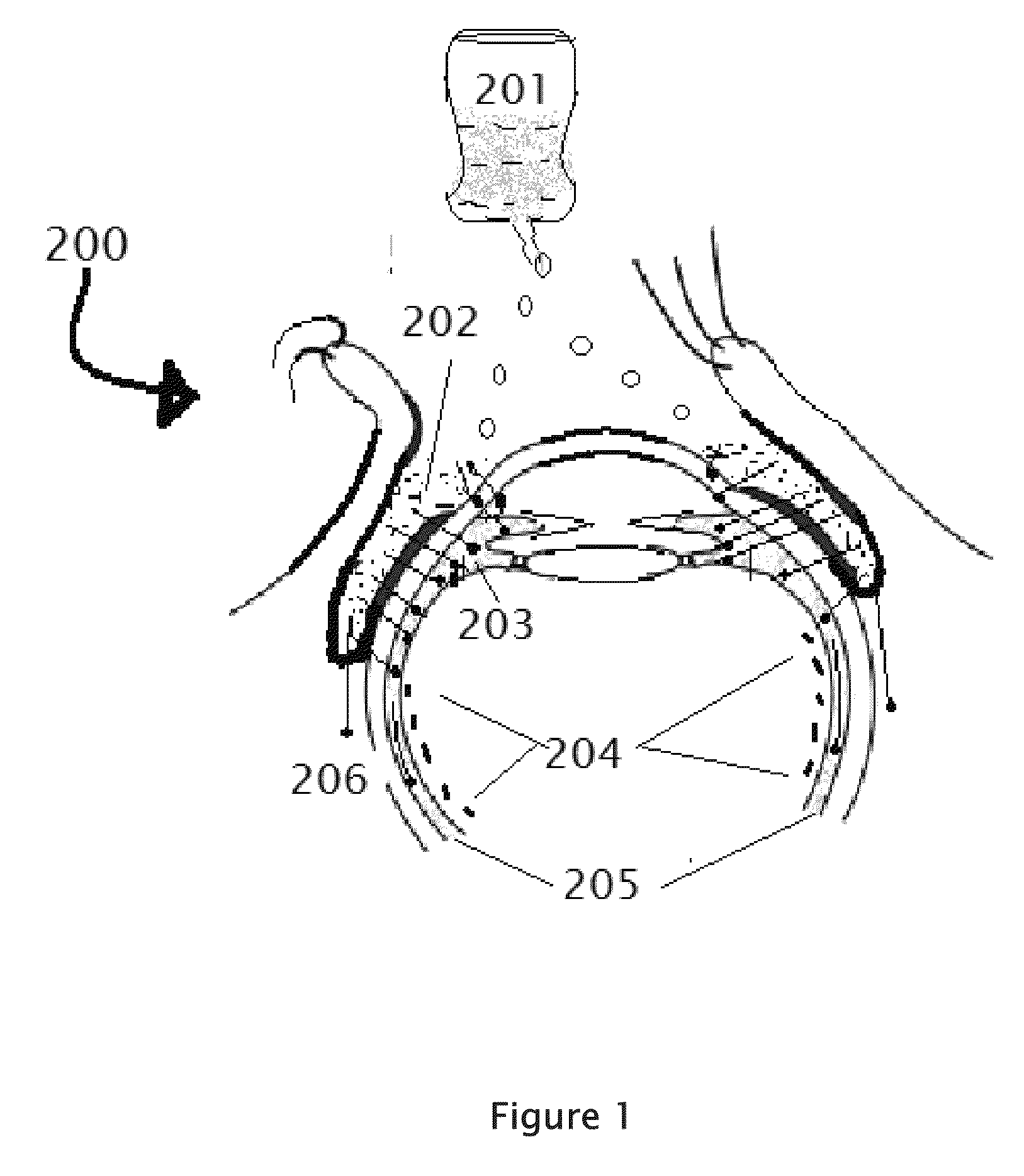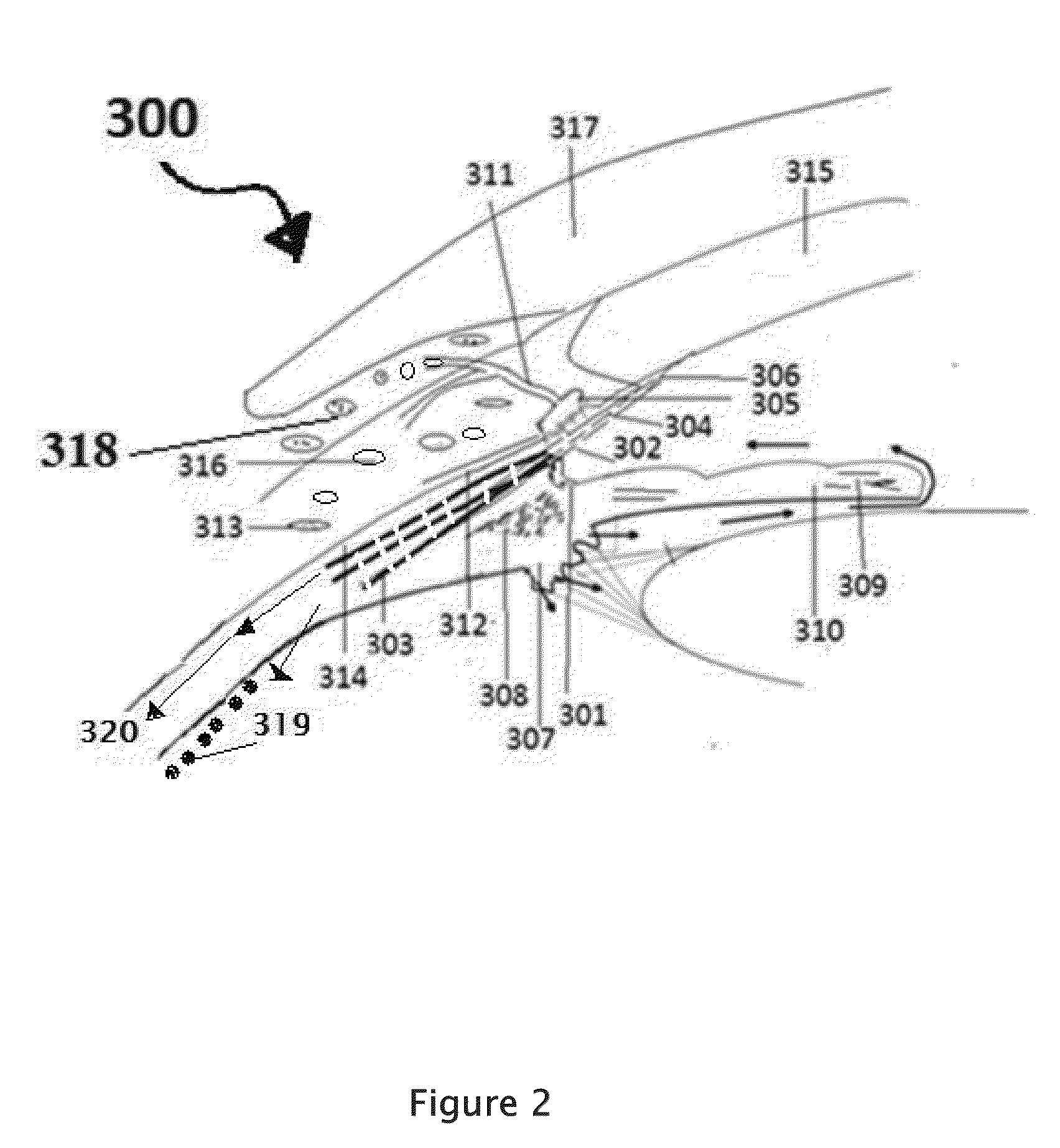Retinitis pigmentosa treatment and prophalaxis
a technology for retinitis pigmentosa and treatment, applied in the direction of peptides, cardiovascular disorders, drug compositions, etc., can solve the problems of night blindness, toxic excess intake of vitamin a, harm to our body, etc., to reduce or avoid unwanted or adverse effects, increase patient compliance, and improve the effect of therapeutic
- Summary
- Abstract
- Description
- Claims
- Application Information
AI Technical Summary
Benefits of technology
Problems solved by technology
Method used
Image
Examples
example 1
[0185]Select the patient establish the type of retinitis pigmentosa and the RP etiology which the person is suffering. The complete examination of the eye as described above is important, Record the preliminary examination results on the patient chart. The patient will be examined for any corneal, conjunctival, and retinal BV afflictions by using marker dyes. Position the patient in a supine posture or sitting with the head hyper extened with a support. Using a dropper or dropper bottle containing the insulin formulations are instilled two or three drops of insulin preparation in each eye lower lid formix and / or everted upper eyelid. Both eyes receive the eye drops. Apply slight pressure at the nasal angle of eye on the nasolacrimal canaliculi-sac-duct system to prevent leaking of the therapeutic agents to the nose to avoid systemic absorption. The adverse effects can be prevented or minimized using the method shown in the FIG. 6.
[0186]The patient must remain stationary for 2-3-5 mi...
example 2
[0187]Follow the instruction as described in the above EXAMPLE 1.
[0188]If the retinitis pigmentosa is associated with keratoconus sicca, use a topical FDA approved emulsion of cyclosporin for treating the associated condition (Restasis™, Allergan, Inc., and Irvine, Calif.). The emulsion is a mixture of cyclosporin combined with a higher fatty acid glyceride, such as castor oil, and a surface active agent, such as polysorbate 80, and an emulsion stabilizer, such as a cross-linked polyacrylate. This acts by decreasing the inflammation on the eye surface (probably eye lid tear glandular system). The emulsion helps to increase the production of healthy tears. However, treatment with an emulsion containing oily droplets can result in eye irritation or a clouding of visual field. The emulsion may delay the absorption of insulin.
[0189]The oily consistency of this preparation makes the active ingredient less bioavailable. Restasis is not appropriate for immediate relief for an uncomfortable...
example 3
[0190]Follow the instruction as described in the above EXAMPLE 1. If the men and woman suffer from retinitis pigmentosa with dry eyes syndrome due to estrogen and tesosterone deficiency. They can be treated with estorgen and testosterone opthalmic drops with insulin. Androgens are believed to be trophic factors for various glandualar and neuronal tissues including the retina. The androgens exert potent anti-inflammatory activity through the production of transforming growth factor beta (TGF-beta), suppressing lymphocytic infiltration, inflammatory response in the pigment epithelium, and the retina and the associated blood vessels.
[0191]The eye drops containing testosterone can be prepared which the drops can be used after pretreatment with insulin. The ophthalmic drops can be prepared using testosterone (androgen), DHEA—a mild androgen, cyclosporin. Insulin can be used to treat retinitis pigmentosa with the dry eyes syndrome, Sjogren's syndrome, and KCS at the same time. Our prelimi...
PUM
| Property | Measurement | Unit |
|---|---|---|
| Biological properties | aaaaa | aaaaa |
| Therapeutic | aaaaa | aaaaa |
Abstract
Description
Claims
Application Information
 Login to View More
Login to View More - R&D
- Intellectual Property
- Life Sciences
- Materials
- Tech Scout
- Unparalleled Data Quality
- Higher Quality Content
- 60% Fewer Hallucinations
Browse by: Latest US Patents, China's latest patents, Technical Efficacy Thesaurus, Application Domain, Technology Topic, Popular Technical Reports.
© 2025 PatSnap. All rights reserved.Legal|Privacy policy|Modern Slavery Act Transparency Statement|Sitemap|About US| Contact US: help@patsnap.com



